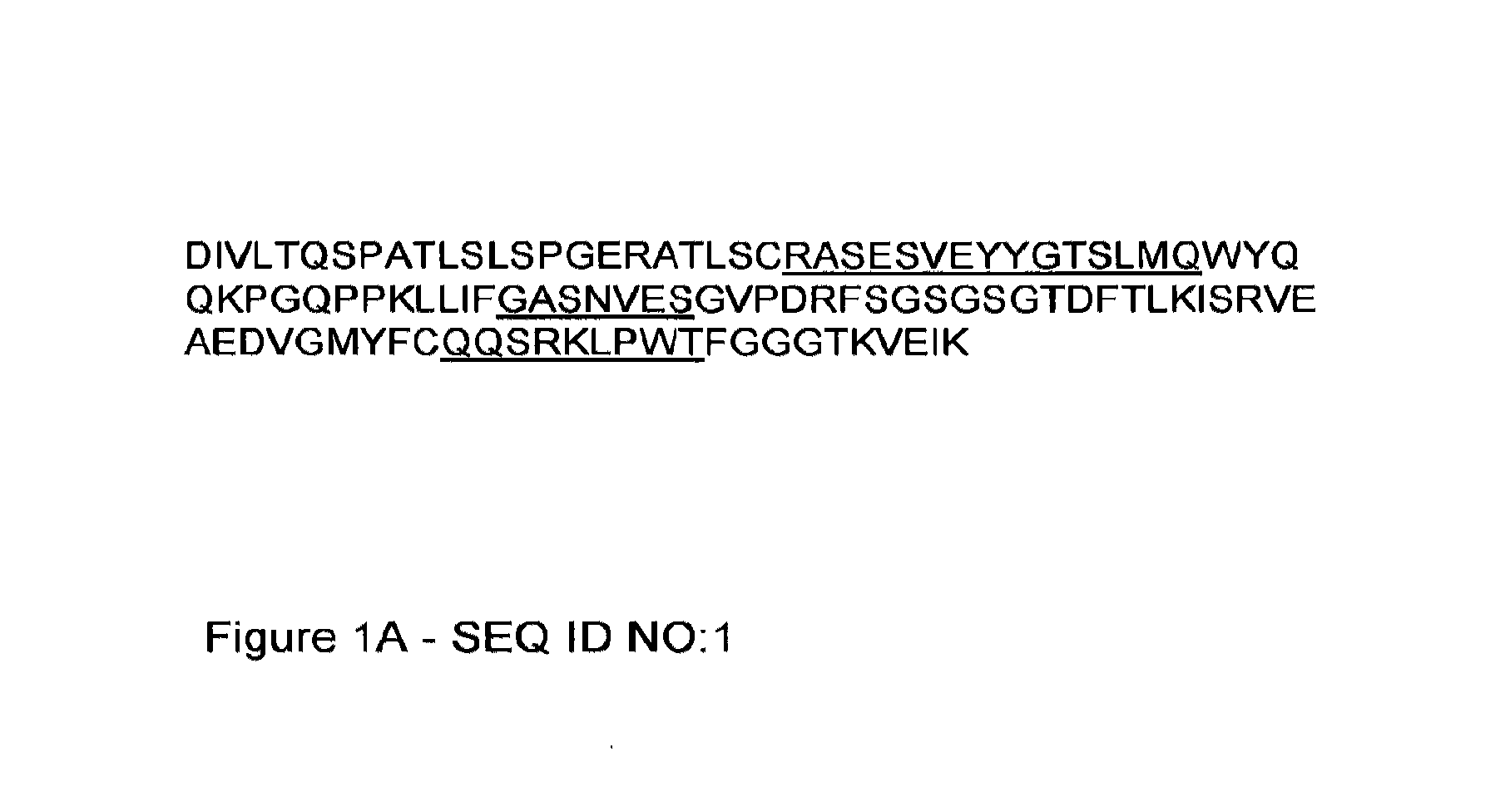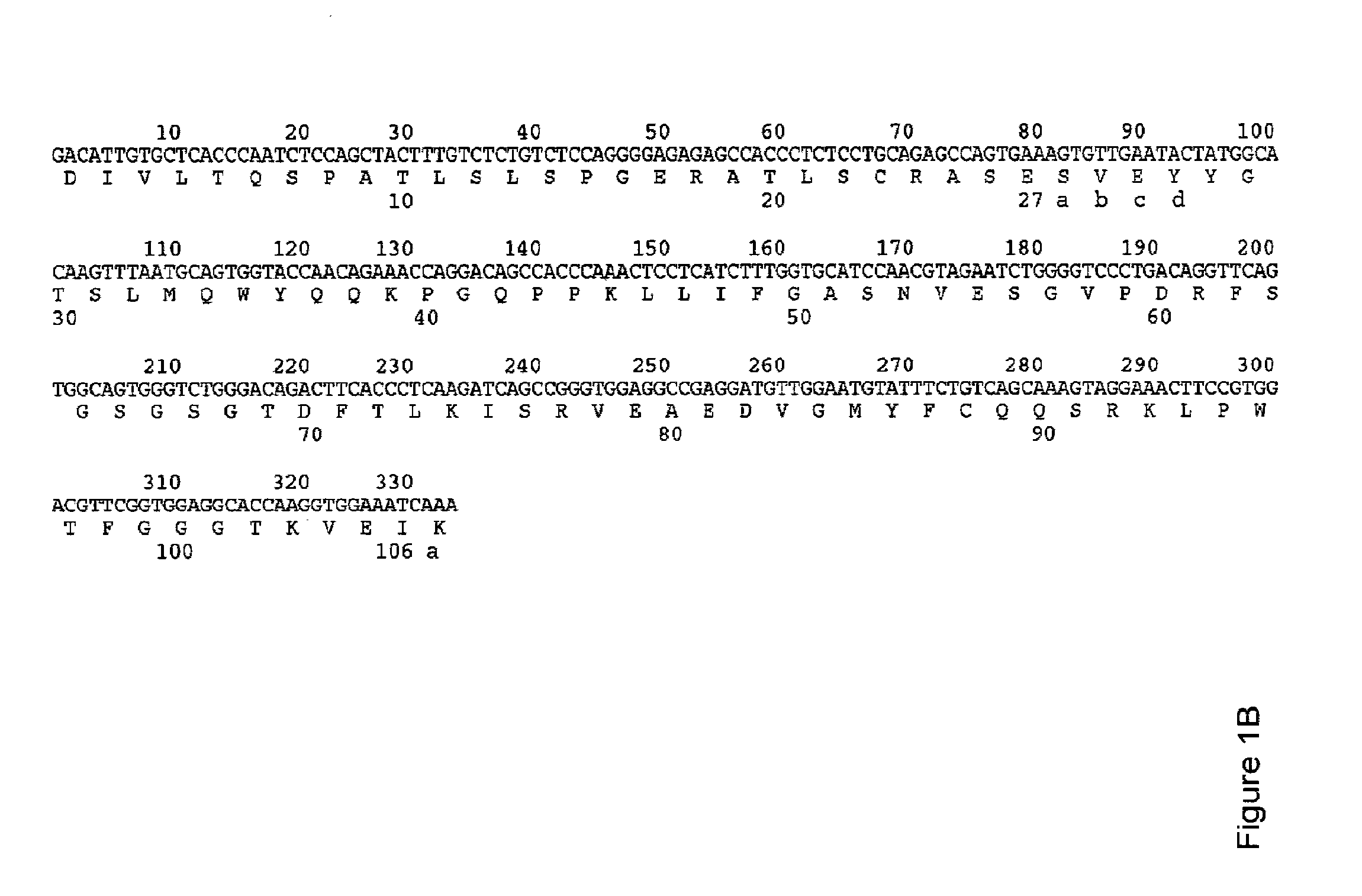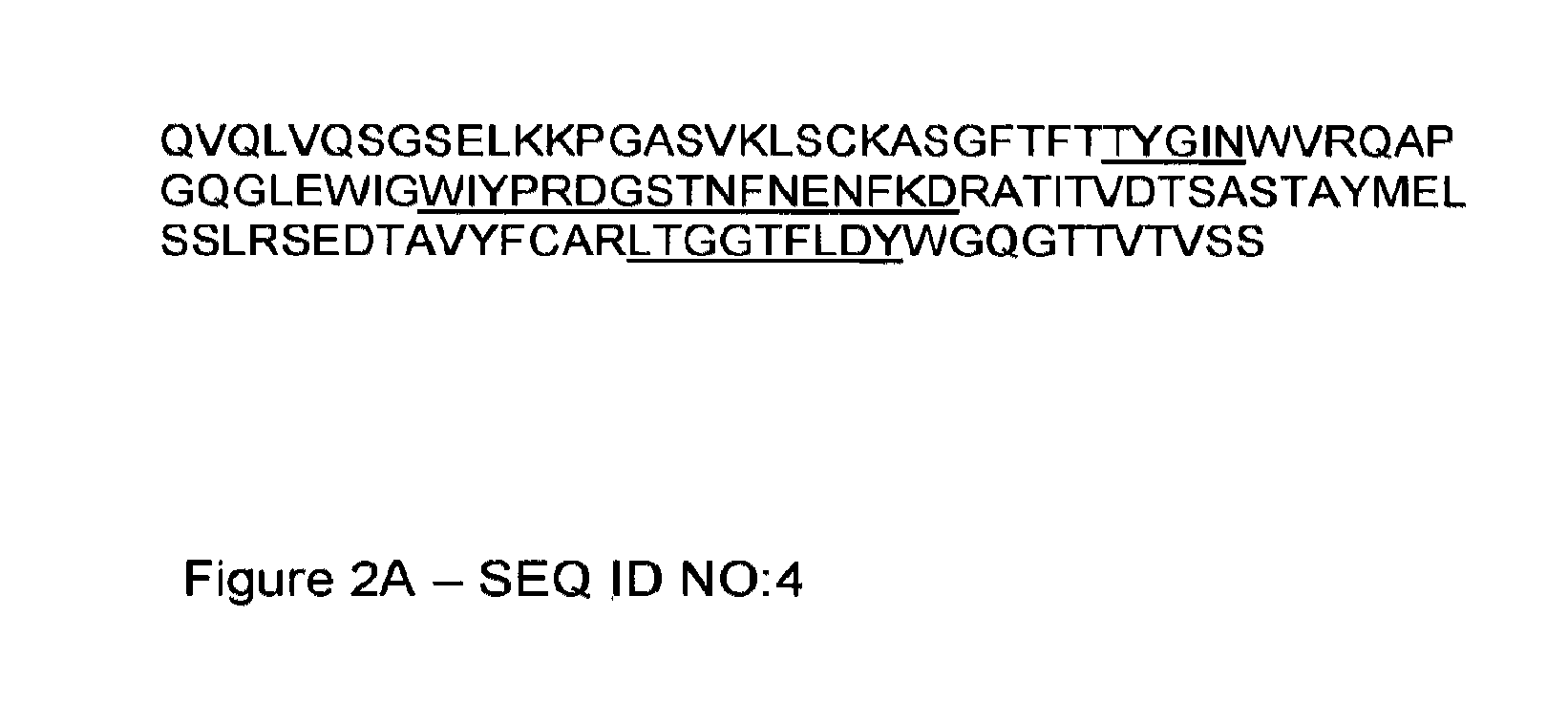Humanised Antibodies to Toll-Like Receptor 2 and Uses Thereof
a technology of toll-like receptor and humanised antibodies, which is applied in the field of humanised antibodies, can solve the problems of neutralising the effectiveness of therapeutic antibodies, compromising the therapeutic effectiveness of administered antibodies, and unsatisfactory immune responses, so as to enhance the therapeutic efficacy of humanised antibodies, improve the binding specificity of humanised antibodies, and reduce the immunogenicity of antibodies
- Summary
- Abstract
- Description
- Claims
- Application Information
AI Technical Summary
Benefits of technology
Problems solved by technology
Method used
Image
Examples
example 1
Production of Fully Humanised Monoclonal Antibody
[0258]The TLR2 antagonistic antibodies of the present invention are typically fully humanised antibodies. That is, the antibodies are fully human in origin, and therefore do not contain regions or amino acid combinations derived from non-human species, such as mice.
[0259]One method of producing the fully humanised antibodies of the invention is through the use of composition human antibody technology (Antitope, UK) as described in International PCT Patent Application No. WO 2006 / 082406. Such antibodies are composite proteins comprising 2 or more segments of amino acid sequence derived from human antibodies. The segments can be selected such that the presence of T-cell epitopes in the final antibody is avoided, for example by screening the residues, particularly of the light and heavy chain variable regions to ensure that they do not comprise MHC class II binding motifs, or that they that do not comprise residues which anchor the bindi...
example 2
Determination of Binding Properties of OPN-305 Monoclonal Antibody
[0266]The inventor has surprisingly identified that the T2.5 TLR2 antagonistic murine monoclonal antibody requires binding to CD32 in order to fully antagonise Toll-like
[0267]Receptor 2 function. Experimentation was therefore performed to confirm that this functional limitation associated with the use of the T2.5 antibody was not also associated with the use of the OPN-305 monoclonal antibody in order to mediate its effect of neutralising Toll-like Receptor 2 biological activity.
Materials and Methods:
[0268]THP-1 cells are human peripheral blood monocytic cells. In response to Toll-like Receptor ligands, the transcription factor NF-kappaB and other transcription factors are activated in THP1 cells. The THP-1 Blue cell line has been stably transfected with a reported plasmid encoding the secreted embryonic alkaline phosphatase (SEAP) gene under the control of a promoter inducible by several transcription factors, such a...
example 3
Role of CD32 in Toll-Like Receptor 2 Antagonism
[0272]The results of Example 2 suggest that antagonism of Toll-like Receptor 2 by the OPN-305 fully humanised antibody of the invention is not dependent upon that antibody binding to CD32 (either CD32a or CD32b)
[0273]In order to confirm this, and to provide a comparison to other TLR2 antagonistic antibodies which are known in the field, such as the T2.5 murine TLR2 monoclonal antibody (OPN-301), further experimentation was performed.
Materials and Methods:
[0274]THP-1 CD14 Blue cells (Invivogen, San Diego, USA) were preincubated with doses of antibodies which block CD32a or CD32b.
[0275]The pre-incubated THP-1 CD14 Blue cells were incubated with increasing doses of (i) an anti-human FcgammaRIIa (CD32a) antibody (R&D Systems, catalogue number AF1875, as used in the previous example), (ii) an anti-human FcgammaRII (CD32) antibody (R&D Systems, catalogue number AF1330) or (iii) an isotype control antibody (goat IgG (R&D systems, catalogue num...
PUM
| Property | Measurement | Unit |
|---|---|---|
| concentration | aaaaa | aaaaa |
| concentration | aaaaa | aaaaa |
| concentration | aaaaa | aaaaa |
Abstract
Description
Claims
Application Information
 Login to View More
Login to View More - R&D
- Intellectual Property
- Life Sciences
- Materials
- Tech Scout
- Unparalleled Data Quality
- Higher Quality Content
- 60% Fewer Hallucinations
Browse by: Latest US Patents, China's latest patents, Technical Efficacy Thesaurus, Application Domain, Technology Topic, Popular Technical Reports.
© 2025 PatSnap. All rights reserved.Legal|Privacy policy|Modern Slavery Act Transparency Statement|Sitemap|About US| Contact US: help@patsnap.com



